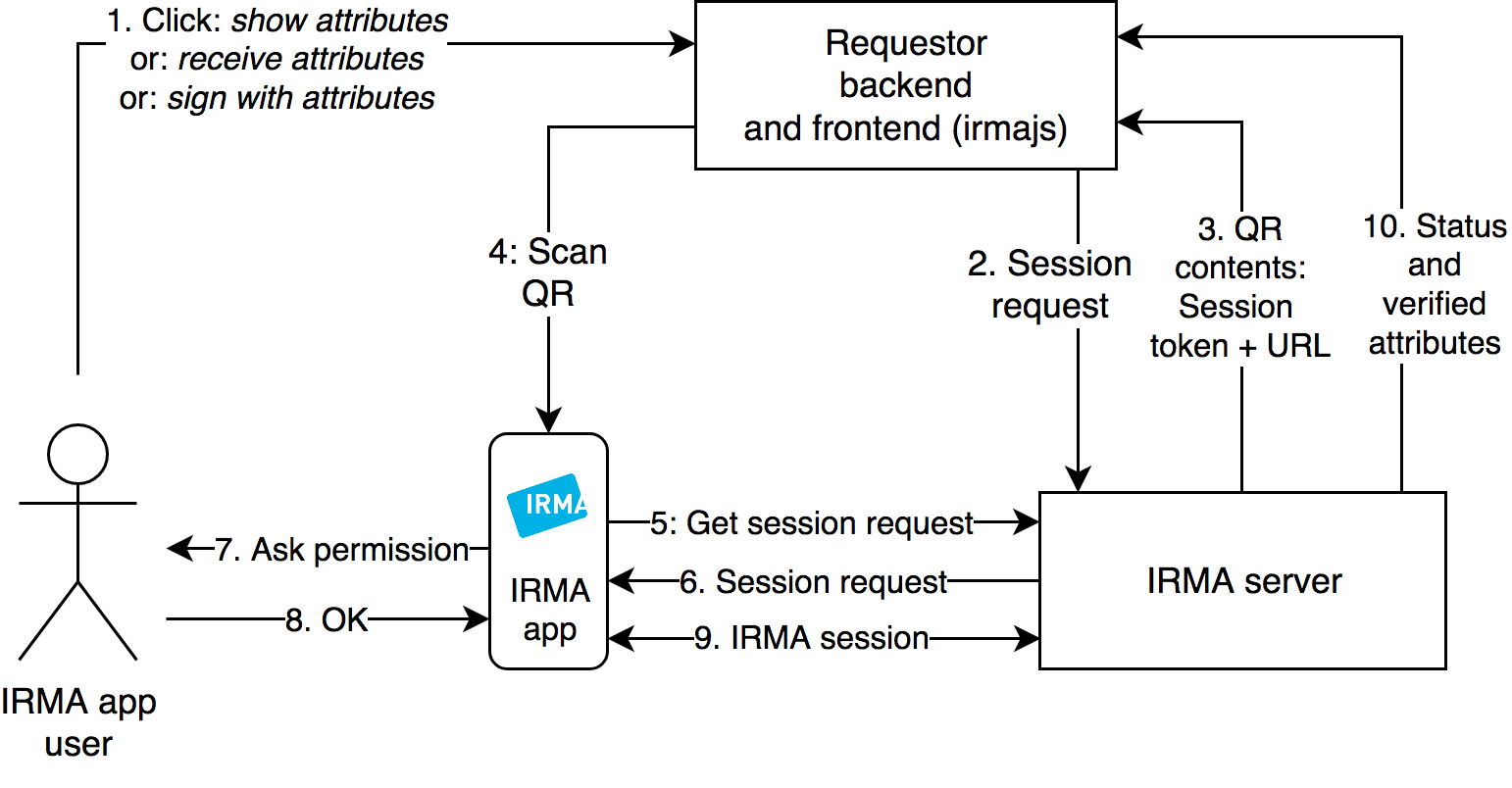...
| Gliffy Diagram | ||||||
|---|---|---|---|---|---|---|
|
SAML to IRMA
| Gliffy Diagram | ||||||
|---|---|---|---|---|---|---|
|
COms, SRAMs?
| Gliffy Diagram | ||||||
|---|---|---|---|---|---|---|
|
Add Social to 4.2?
Trust model
also compare trust model to federation/eduGAIN
IRMA key server is analogous to SAML Metadata as it provides the underlying certificates
the IRMA app is quite central, so the governance is a big difference (who puts what certificates to the app)
Technical model
How does verification actually work in IRMA?
https://irma.app/docs/overview/
Image from IRMA doc: https://irma.app/docs/what-is-irma/#irma-session-flow
Verifier: consume credentials from holder
...
There is an inevitable tendency for specialization in science, because any modern problems can only tackled in focused, carreercareer-long efforts, so in most subdisciplines the researchers will have a tendency of knowing each other.
This, however, presents a challenge for the review process. In order to overcome the challenge, in most widely used review processes a degree of anonimity anonymity is introduced.
The "Single Blind" process is considered to be a minimum requirement - in this case, the author does not learn the identity of the reviewer. For most journals this is considered insufficient, since the reviewers still know the identity of the author and they may be biased in one way or the other. Yet, in some cases, especially in less common language there is no true alternative as the content of the article drastically narrows down the set of possible authors, sometimes to one. In these cases the more anonymous methods are disingenousdisingenuous.
The "Double Blind" process means that neither the authors learn the identity of the reviewers or the reviewers of the authors. This is the most common type of peer review process. But it still leaves significant control in the hands of the editor, who knows the identity of both, plus, due to the structure of the fields of science, she may personally know all parties and have their own iterestinterest. The editor may also know the review styles of particular reviewers based on previous engagements. Therefore it is possible to pick a lenient or a strict reviewer for a given paper for instance.
The Triple Blind method prevents this problem as the identities of the author, editor, reviewer are uknown unknown to each other. However, this is the hardest to implements, as the editor still needs to be sure about the expertise of the reviewer, moreover, she should also know that the author does not temper with the process by being its own reviewer or bringing in friendly reviewers. At this point the scientific process becomes somewhat analoguous analogous with e-voting systems.
Furthermore, all three types of blind reviews have a common problem, which is that the work of the reviewer cannot be easily credited to them. This disincetivises disincentivizes the reviewers form participating and therefore is a drawback for the the entire scientific process.
...

